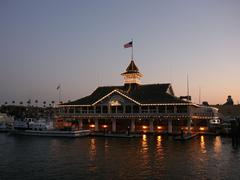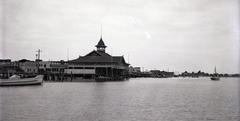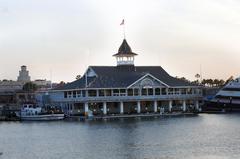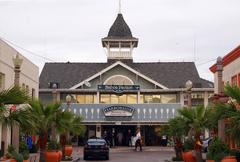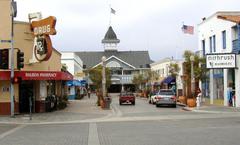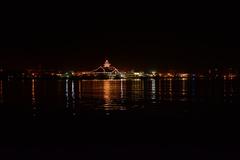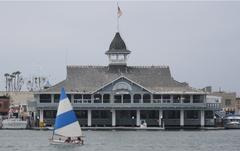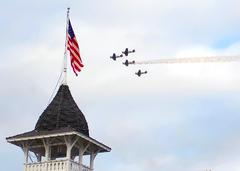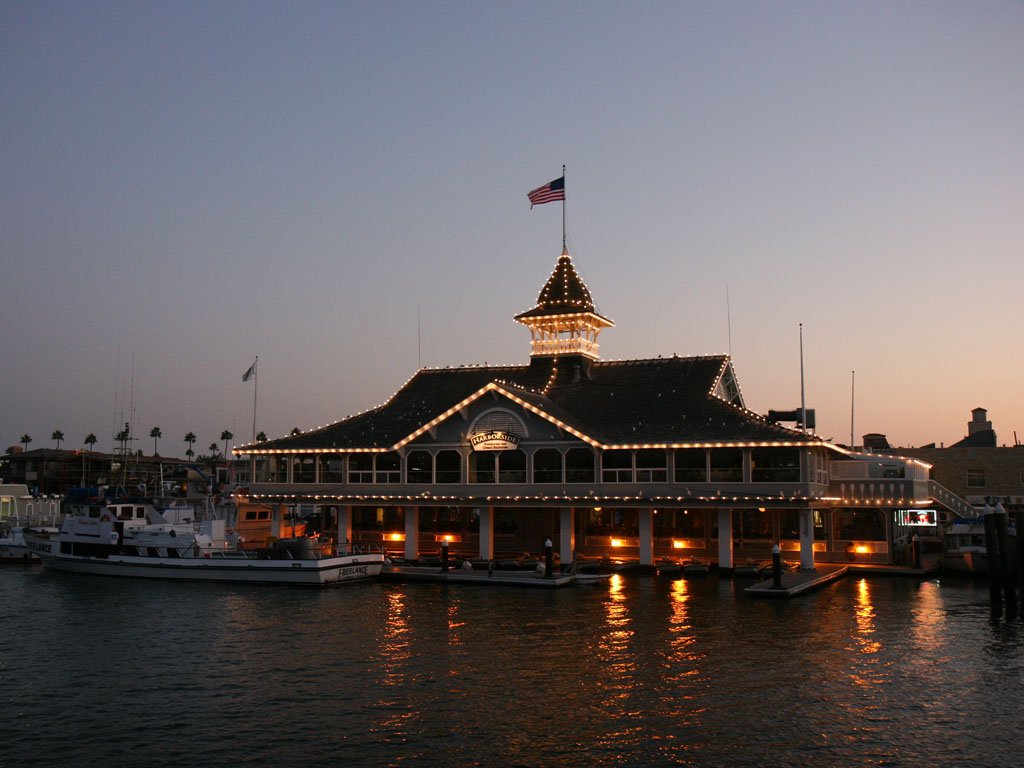
Balboa Pavilion Visiting Hours, Tickets, and Historical Significance
Date: 19/07/2024
Introduction
Welcome to the comprehensive guide for visiting the historic Balboa Pavilion in Newport Beach, California. Constructed in 1906, the Balboa Pavilion is not only one of the oldest structures in the region but also a symbol of architectural and cultural significance (Newport Beach Historical Society). This iconic landmark, designed by Fred R. Dorn, initially served as a terminal for the Pacific Electric Railway, bringing visitors from Los Angeles to Newport Beach (OC Register). Over the decades, the Pavilion has played a pivotal role in the social and recreational life of the community, hosting dances, concerts, and various community gatherings. In this guide, we will delve into the rich history of the Balboa Pavilion, provide visitor information including ticket prices and opening hours, and offer travel tips to enhance your visit. Whether you’re a history buff, an architecture enthusiast, or simply looking to enjoy waterfront activities, the Balboa Pavilion has something to offer everyone (Visit Newport Beach).
Table of Contents
History of Balboa Pavilion
Early Beginnings
The Balboa Pavilion, located in Newport Beach, California, is one of the most iconic landmarks in the area. Constructed in 1906, it was initially built as a social and recreational center for the burgeoning community. The Pavilion was designed by architect Fred R. Dorn and constructed by the Newport Bay Investment Company. Its primary purpose was to serve as a terminal for the Pacific Electric Railway, which brought visitors from Los Angeles to the coast. The Pavilion quickly became a focal point for social gatherings, dances, and various community events (Newport Beach Historical Society).
Architectural Significance
The Balboa Pavilion is a prime example of Victorian architecture, characterized by its ornate detailing, gabled roof, and large, open spaces. The structure’s design includes a distinctive cupola, which has become a recognizable feature of the Newport Beach skyline. The Pavilion’s architectural style reflects the opulence and grandeur of the early 20th century, making it a significant historical and cultural landmark (OC Register).
Role in the Development of Newport Beach
The Pavilion played a crucial role in the development of Newport Beach as a popular tourist destination. In the early 1900s, the Pavilion was the epicenter of social life in the area, hosting events such as dances, concerts, and community gatherings. It also served as a hub for water-based activities, including boating, fishing, and swimming. The Pavilion’s presence helped to attract visitors and residents to Newport Beach, contributing to the area’s growth and development (Visit Newport Beach).
The Pavilion During the 1920s and 1930s
During the 1920s and 1930s, the Balboa Pavilion continued to thrive as a social and recreational center. The Pavilion’s dance hall, known as the “Balboa Ballroom,” became famous for its live music and dancing. It was a popular venue for big band performances, attracting renowned musicians and entertainers of the era. The Pavilion also hosted various community events, including holiday celebrations, fundraisers, and civic meetings (Los Angeles Times).
World War II and Post-War Era
The onset of World War II brought significant changes to the Balboa Pavilion. During the war, the Pavilion was repurposed for military use, serving as a training facility for the United States Navy. After the war, the Pavilion returned to its role as a social and recreational center, but it faced challenges as the popularity of other entertainment venues grew. Despite these challenges, the Pavilion remained a beloved landmark and continued to host events and activities for the community (Newport Beach Historical Society).
Preservation and Restoration Efforts
In the latter half of the 20th century, efforts were made to preserve and restore the Balboa Pavilion. Recognizing its historical and cultural significance, local organizations and community members advocated for the Pavilion’s preservation. In 1968, the Pavilion was designated as a California Historical Landmark, and in 1980, it was added to the National Register of Historic Places. These designations helped to ensure the Pavilion’s protection and preservation for future generations (National Park Service).
Visitor Information
Tickets and Opening Hours
The Balboa Pavilion is open daily from 10 AM to 10 PM. Tickets for events and activities can be purchased online at the official Pavilion website or at the venue itself. Prices vary depending on the event or activity, so it is recommended to check the website for the latest information.
Travel Tips
For a memorable visit, consider these tips:
- Arrive early to avoid crowds, especially during weekends and holidays.
- Take advantage of waterfront dining options for a scenic meal.
- Explore nearby attractions like the Balboa Fun Zone, which offers rides, games, and other entertainment.
- Parking is available nearby, but public transportation is also a convenient option to reach the Pavilion.
Cultural Impact
The Balboa Pavilion has had a lasting cultural impact on Newport Beach and the surrounding area. It has been featured in numerous films, television shows, and advertisements, further cementing its status as an iconic landmark. The Pavilion’s rich history and cultural significance make it an important part of Newport Beach’s heritage, and it continues to be a source of pride for the community (OC Register).
FAQ
- What are the visiting hours for Balboa Pavilion? The Pavilion is open daily from 10 AM to 10 PM.
- How much are tickets to the Balboa Pavilion? Ticket prices vary depending on the event or activity. Check the official Pavilion website for the latest information.
- What can you do at Balboa Pavilion? Visitors can enjoy waterfront dining, shopping, recreational activities such as boating and fishing, and attend various events.
Conclusion
The Balboa Pavilion stands as a testament to the rich history and cultural heritage of Newport Beach. Its architectural beauty, historical significance, and ongoing role as a social and recreational center make it a must-visit destination for tourists and locals alike. Whether you’re interested in exploring its history, enjoying waterfront activities, or simply taking in the stunning views, the Balboa Pavilion offers something for everyone (Newport Beach Historical Society).
For the latest updates and more information, download the Audiala app, or follow us on social media (OC Register).
References
- Balboa Pavilion - Visiting Hours, Tickets, and Historical Significance in Newport Beach, 2024, Newport Beach Historical Society source
- Exploring the Balboa Pavilion - History, Tickets, Visiting Hours, and More in Newport Beach, 2024, National Park Service source
- Ultimate Guide to Visiting Balboa Pavilion, Newport Beach - Hours, Tickets, and Tips, 2024, OC Register source
- Exploring the Balboa Pavilion - History, Tickets, Visiting Hours, and More in Newport Beach, 2024, Visit Newport Beach source
